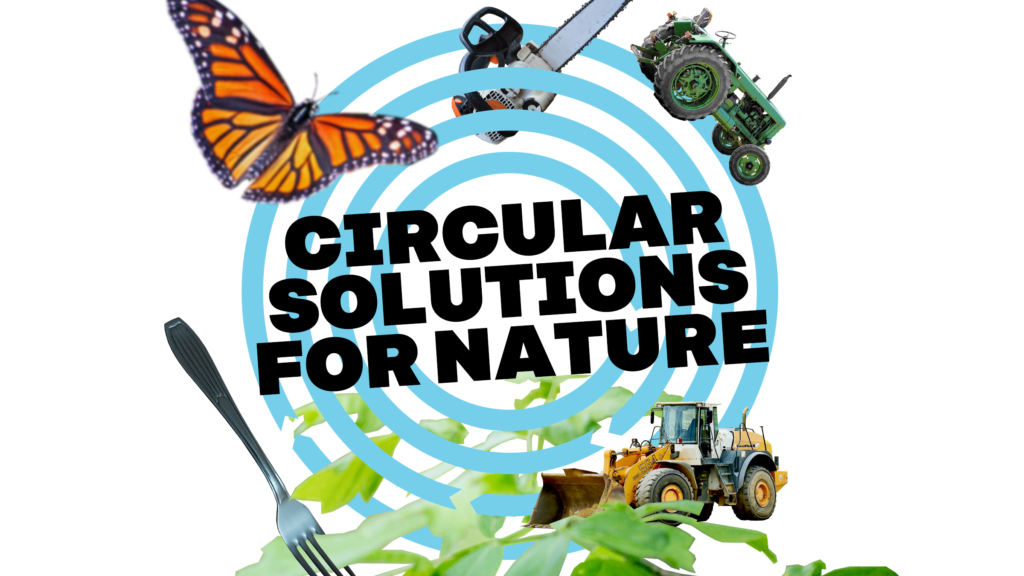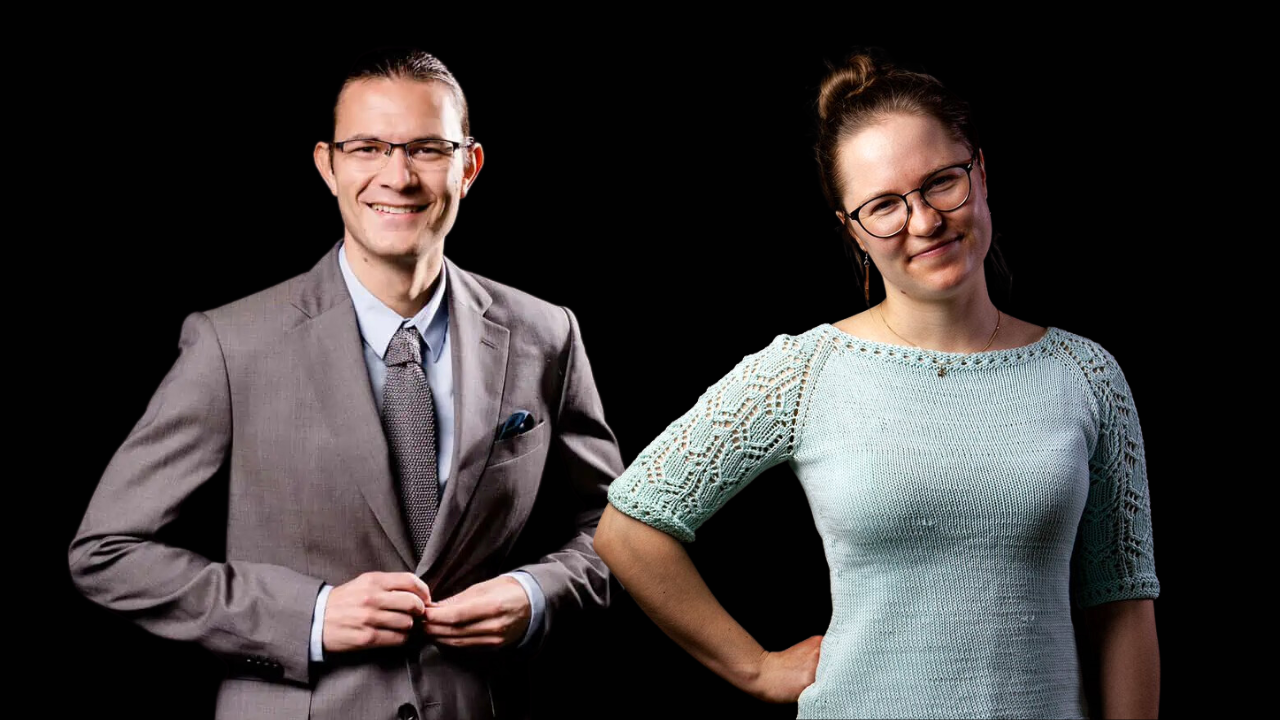For the first time the world has a global agreement to halt and reverse biodiversity loss – already by 2030. This is important as we are probably causing a sixth mass extinction. The Kunming-Montreal Global Biodiversity Framework lets us focus on the solutions, and the good news is that we already have many viable and effective business solutions right in front of us.
As 90% of biodiversity loss is due to the extraction and processing of natural resources, many of the most powerful solutions are about new ways of producing, consuming and managing materials in a circular economy. Finland, the Netherlands, Belgium and Austria have already set absolute targets for capping or reducing their national resource use. Such targets are critical for the world’s nature.
However, certain sectors – and therefore also certain circular solutions – are particularly important. Sitra’s study Tackling root causes has shown that a circular transition in four key sectors can halt and reverse global biodiversity loss already by 2035. These four sectors were also the focus for the Sitra-FIBS Science-based targets for nature pilot in which companies combed through their supply chains, prioritised hotspots for target-setting and then explored how circular solutions could deliver on the targets.
Let’s explore these four sectors and some of the leading Nordic circular solutions that are both unlocking new value for business and at the same time help tackle biodiversity loss.

Apply now to be included on Sitra’s list of leading circular economy solutions in Europe for nature.
Food and agriculture
The food and agriculture sector is central to tackling the triple planetary crisis of biodiversity loss, climate change and pollution. In Sitra’s 2050 circular scenario, it is the sector that could enable the fastest biodiversity recovery and on its own halt biodiversity loss, while slashing methane emissions in agriculture by 90% and nitrogen fertilisers by 30%. The result would be a more resilient and less polluting food system, with room for nature to thrive. Not only are the benefits far-reaching; the pallet of solutions is also rich. These solutions give us more value from underused resources and existing products, drive regenerative outcomes and leverage design for products with smaller resource footprints.

Listen to Solar Food’s story at the WCEF2023.
Design with lower land use and resource inputs is of critical importance for biodiversity, in particular for the seven commodities and derived products covered in the EU’s deforestation regulation – cattle, cocoa, coffee, natural rubber, palm oil, rubber, soy and timber – as these commodities are responsible for the majority of global biodiversity loss. In fact, switching to alternative proteins alone frees up a land area larger than India and provides 47% of the biodiversity recovery in Sitra’s 2050 circular scenario. This is possible because today as much as 39% of habitable land is used to farm livestock for meat and dairy production. Many Nordic firms are already offering solutions, with products that require less land and lower resource inputs overall, and which also use deforestation-free inputs from the Nordics.
Future-proof food innovations from the Nordics
- VTT has developed lab-grown cellular coffee as well as cell-cultured cacao. The Finnish research institute has also developed egg white through precision fermentation.
- Verso Food is a Finnish company which sells alternative proteins made from Finnish fava beans.
- Dug is a Swedish plant-based drink made from potatoes through an emulsion technology.
- Bärta offers a healthy Swedish plant-based alternative based on e.g., whole wheat flour and yellow peas fermented in the same way as tempeh.
- Solar Foods has developed Solein®, a protein made ”out of thin air”, with cellular agriculture in Finland.
- Lupinta is working to develop plant-based food from the land-efficient lupin beans (link in Swedish) from Scania in Sweden.
- Gold & Green is a Finnish brand which produces meat-like plant-based products such as “Pulled oats” (link in Finnish).
- Sproud makes plant milk from Swedish yellow peas.
In Sitra’s 2050 circular scenario, 20% of the biodiversity recovery comes from tackling food waste and loss.
More value from existing products can be gained from existing food products by designing out waste and reducing downcycling. In Sitra’s 2050 circular scenario, 20% of the biodiversity recovery comes from tackling food waste and loss. Nordic solutions are wide and varied: Axfoundation is working with oat drink producers to valorise oat press residue, which today is mostly only used for feed, fertiliser and biogas, while Volare refines industry side streams into everything from pet food to oils that can replace coconut and palm oil. Supermarkets are also making strides to reduce their food waste, from Greenlandic Brugseni to Finnish K Group, which makes soups and juice out of leftover produce. Through Whywaste’s software-as-a-service solution food retailers can cut even more waste, spend less time on checking dates and gain more revenues from discounts.

Listen to Axfoundation’s story at the WCEF2023.
Making use of underappreciated fish. In Finland, wild fish only accounts for 8% of the market according to Yle, and whitefish in particular is underused. At the same time, two thirds of Finland’s fish is imported. However, by making better use of underused Nordic whitefish, it is possible to both reduce global overfishing and limit whitefish populations. This could improve water quality and ecosystem health through a process known as biomanipulation. Besides increasing the catch, more can be done to add value to Nordic fish. According to Hailia – which has developed a herring-based alternative to tuna, mince or chicken strips – most of the Finnish herring catch ends up as feed and only 3% on our plates. Järki särki is another product which through clever design and labelling made an overlooked fish, roach, into a premium choice – challenging our notions of what we can enjoy eating, similar to how a clever Norwegian marketing campaign once helped make salmon the main staple of modern sushi.
The food and agriculture sector could on its own halt biodiversity loss.
New feedstocks from the ocean. Aquatic resources other than fish are being developed for food and a range of other applications. An emerging research field is algae, which has wide-ranging properties and can help relieve land-use pressures. In Sweden, the design and innovation studio Interesting Times Gang and the kelp producer Nordic Seafarm have worked together to use Nordic kelp to develop biodegradable plastic – an area that Finnish Neste is also working on. In Iceland, Resea Energy is working to develop biofuels from seaweed, while CircleFeed is developing a methane-reducing cattle feed additive based on brown kelp and red seaweed. Faroese TARI even produces gourmet snacks from seaweed, and they hope to one day also produce health supplements. Denmark has also shown that everyone can grow their own seafood. More than 1,000 people already grow mussels, oysters and algae in “marine allotments” as a hobby.
Regenerative agriculture. Regenerative principles applied across fields and forests add another 10% to the biodiversity recovery in Sitra’s circular scenario. Thus, while it is critical to reduce our resource use, the management practices employed, for example in agriculture, are also important, from polyculture to crop rotation and no-tilling methods. Closing local resource loops and improving soil health are two other practices used by Icelandic Melta, which offers local recirculation services and production of organic fertilisers from bio-waste. Two challenges farmers often face are the lack of resources and skills. Danish Agreena is tackling these challenges by incentivising the transition through their soil carbon platform, while other Nordic companies are creating demand for regenerative production through value chain targets. For instance, the Finnish wine and spirits brand Anora has committed to sourcing 30% regeneratively farmed barley by 2030. Baltic Sea Action Group is pioneering education efforts in regenerative agriculture for farmers, for instance through an online course module.

Listen to BSAG’s story at the WCEF2023.
The forest sector
Forests are facing increasing demands as societies both need to move away from fossil fuels and increase carbon sequestration. At the same time, forests safeguard most of Earth’s terrestrial biodiversity, including 75% of bird and 68% of mammal species according to the UN FAO. In Sitra’s 2050 circular scenario, 280 million hectares of natural forest could be spared – over twice the size of the Nordics, not including Greenland. In Finland and Sweden, about 70% of the land area is covered by forests. As the forest sector depends on a rich biodiversity, solutions are emerging to regenerate forests, as we also unlock more value from both the wood we take out of forests and from forests as ecosystems.
Regenerative production has the potential to strengthen soil health, carbon stocks and biodiversity.
More value through regenerative forestry. The type of management practices used in forests is key to either driving or halting biodiversity loss. Although regenerative production is a novel concept in Nordic forestry (see e.g., Metsä Group), it has the potential to strengthen soil health, carbon stocks and biodiversity. Moreover, by enhancing nutrient retention and other ecosystem services, regenerative forestry can build resilience as fewer external inputs are needed to sustain forest growth. The inclusion of more broad-leaved trees can also reduce the risk of storm damage and pests. Finnish Arvometsä is demonstrating the potential of continuous cover forestry, while Plockhugget in Sweden supports such forestry practices via their certificate for continuous cover forestry. This new type of forestry can also allow for more diversified and steady revenues, as production is spread across trees of different age as well as more plant species with annual yields.
More value from Nordic forests
- Kääpä Mushroom is breaking industry boundaries by cultivating chaga mushrooms on trees in Finnish forests and refining the chaga compounds into high-value health products.
- Innomost produces active ingredients for the cosmetics and personal care industry made from by-products from Finnish birchwood, often replacing palm oil derivatives.
- Forchem is a Finnish company which substitutes fossil-based materials with crude tall oil and gains more revenues through products such as paints, coatings, soaps and biolubricants.
- Arctic Birch harvests and refines birch sap on an island village on the west coast of Finland. Birch sap can be used in applications such as drinks and cosmetics.
- Juva Truffle Center has established several truffle orchards in Finland. Growing prized truffles on trees provides income and employment opportunities while giving more value from standing trees.
- Montinutra is producing health-promoting products as well as emulsifying and stabilisation agents in foodstuffs out of the by-products of the forest industry.
- Stora Enso is developing wood-based batteries from lignin, a side stream of cellulose fibre production.
Service-based business models can also be used for wood-based products, thereby reducing the pressure on forests as the wood stays in use longer. For example, Encore offers wooden loading pallets through a pay-per-use scheme with a repair service, while Danish NORNORM offers furniture as a subscription service. Parmaco even provides whole buildings as a service, allowing the same building to be used over and over to meet different needs. The benefits include less unnecessary construction and fewer idle buildings which add to heating and maintenance costs. As-a-service models can be applied in innovative ways. Few companies have demonstrated this more than Vuokrapuu (rentable tree in Finnish), which offers Christmas trees as a service.

Listen to Stora Enso’s story at the WCEF2023.
Fibres and textiles
The fashion industry currently accounts for nearly 20% of global industrial wastewater and 8% of global greenhouse gas emissions, according to the UN. Simultaneously, the World Counts estimates that cotton monocultures consume 16% of insecticides. Through circular design, repair, rental, resale and garment-to-yarn recycling, demand for land to grow cotton could be reduced by 40% in Sitra’s circular scenario – an area as large as the UK. Tomorrow’s fibres could also come from new materials that do not compete with existing land use. Fluff Stuff is creating textile fillings produced from bulrush (Typha Latifolia in Latin) cultivated on rewetted Finnish peatlands.
Longer product lifetimes are one of the most important circular outcomes, including in the textile sector where products can be made to be durable as well as repairable. Finnish companies FabPatch and Menddie support these outcomes by making repair easier for consumers. They do this through rub-on repair patches for textiles and an online service platform for garment repair and maintenance. Kids’ wear brand Reima has teamed up with Menddie to add repair services to the existing customer experience, as well as with Emmy, an online marketplace for pre-owned premium clothing.
Ownership-free solutions are also important to help ensure that clothes – however long their lifetimes are – do not sit idle in people’s closets. This can be provided through as-a-service solutions such as leasing or sharing platforms. Lindström provides carpets and workwear as a service, allowing for optimal care and long lifetimes, as Lindström retains ownership of the textiles and has an incentive to produce textiles that last. In Norway, the company STAS has developed a service model for those in need of the most frequent updates of their closets: young children. Their model makes it possible for children’s clothes to be used more times and for fewer garments to be produced in the first place.
Buildings and construction
Only 1% of habitable land was defined as urban and built up in 2019. Albeit a small share of global land, the impacts of construction are profound; urban areas have largely emerged on flood plains and in other highly productive areas which are often biodiversity hotspots. Therefore, the most important biodiversity outcome in the buildings and construction sector is to avoid urban sprawl into surrounding nature. Secondly, by reusing and recycling more of land-intensive construction materials such as timber, cities can also reduce their biodiversity footprint. Taken together, these two areas could free up an area almost the combined size of Iceland and Denmark in Sitra’s circular economy scenario.
The most important biodiversity outcome in the buildings and construction sector is to avoid urban sprawl into surrounding nature.
Using urban space smarter: space as a resource. There are many ways to reduce urban sprawl, to keep it from destroying nature areas in and around cities. Tall buildings may be the first solution that comes to mind, but there are four other dimensions beside the axis that points toward the sky that can help use space in smarter ways. Many Nordic solutions challenge the need for building much of our infrastructure and buildings in the first place, for example by freeing up road space, using public buildings and spaces for more purposes, combining different functions in buildings, retrofitting old buildings for new purposes and using pricing mechanisms to manage the flow of people during different times of the day.
Nordic solutions that help save space
- Framery’s modular meeting pods reduce the need to build whole new meeting rooms.
- Combi Works provides manufacturing and production capacity as a service, offering companies access to excess capacity of other factories. This removes the need to invest in their own machinery or hardware and optimises operations, resource use and land use.
- Street moves is a Swedish initiative in which wood-based modules replace parking spaces with everything from furniture, outdoor gyms, plants and bike storage, allowing for immediate overhauls of streets, as well as more temporary and seasonal solutions to make urban space more liveable.
- Helsinki Region Transport (HSL) provided time-bound discounted transit tickets (50%) for seniors only between 9 a.m. and 2 p.m. during the COVID-19 pandemic to cut peaks and avoid idle capacity.
- GoMore offers car owners the possibility to rent out their cars, one of a set of sharing solutions expected to grow, allowing less urban space to be used up by idle vehicles.
- Toriterassit is a Helsinki-based initiative which has made use of the cities’ squares to have them serve as restaurant courts during the summer.
- Libraries as rental platforms: Helsinki has also reinvented the role of libraries, offering not just books, but also musical instruments, games and renovation supplies – one library has even piloted a bike delivery service. In Oslo, libraries have also started to offer a rental service for tools such as drills and saws.
- Valo Hotel & Work in Helsinki has turned largely vacant hotel rooms into workspaces during the day.
- The Underground city in Helsinki expands across 10 million square meters of tunnels, shops, a museum, a church and a swimming hall, reducing the need for urban sprawl.
Reuse of construction timber can limit negative biodiversity impacts by reducing the pressure on forests. Currently, most Nordic construction timber is burned at the end of life. Hiil is piloting a method to clean and char such wood and return it to new construction, while Copenhagen-based Lendager turned local materials into 20 townhouses. Floors, walls and facades were recovered from offcuts destined for incineration. If more wood can enjoy a second life, we can gain more value from existing resources, while exerting less pressure on our limited forest biomass supply without facing difficult trade-offs.

Listen to Hiil’s story at the WCEF2023.
Call for applications: Leading European circular solutions for nature
At this year’s World Circular Economy Forum WCEF2023, Sitra launched a call for applications for leading European circular solutions for nature. A list of selected solutions will be presented next year at WCEF2024 to show how companies use circular solutions to tackle biodiversity loss while successfully doing business. Read more about the call and apply by 30 September!
Conclusion
The circular economy can help solve multiple planetary crises, including biodiversity loss, while strengthening the economy. Solutions in the food and agriculture, buildings and construction, fibres and textiles and the forest sectors have the largest potential. Nordic organisations have already created many such circular solutions. We hope bringing attention to these solutions will help popularise them as well as inspire new innovations.
